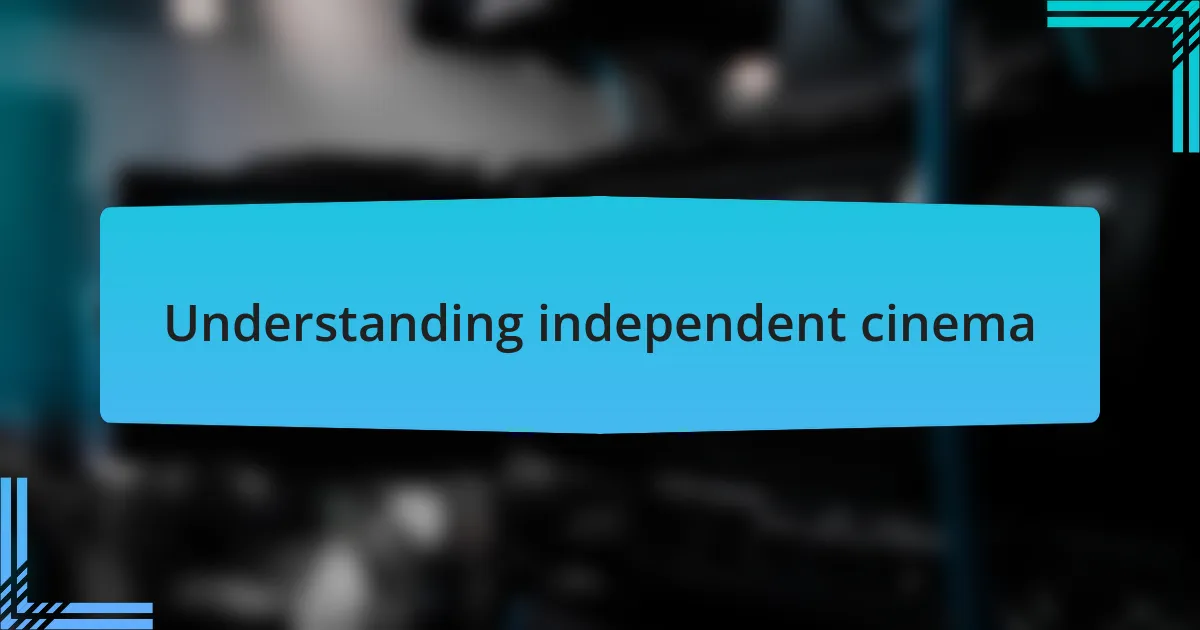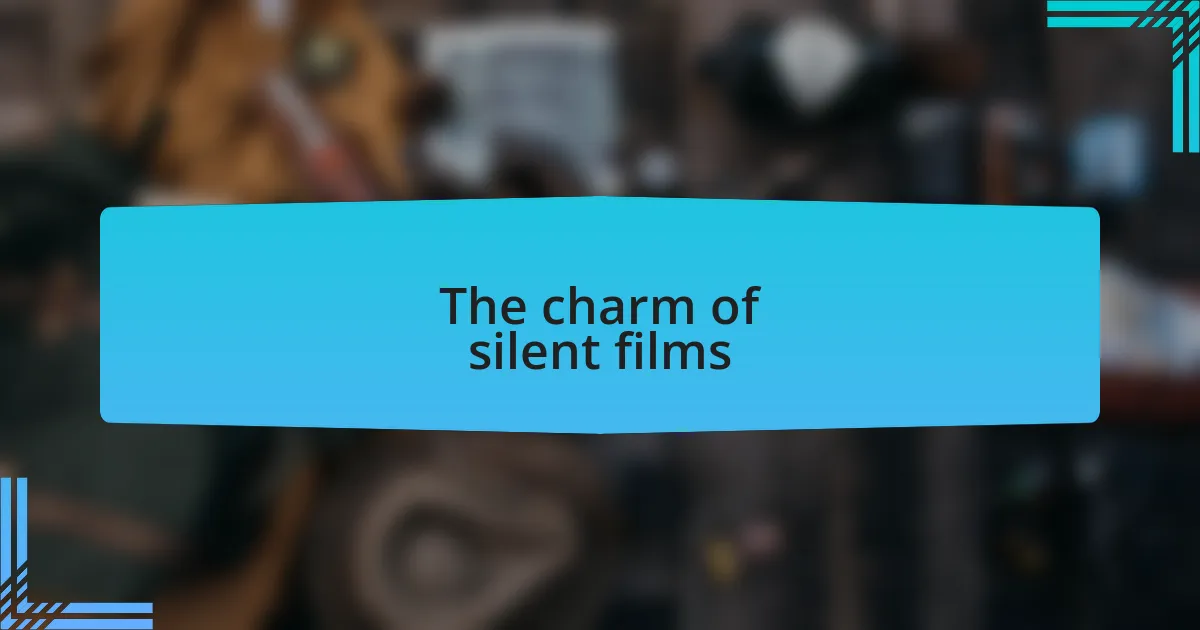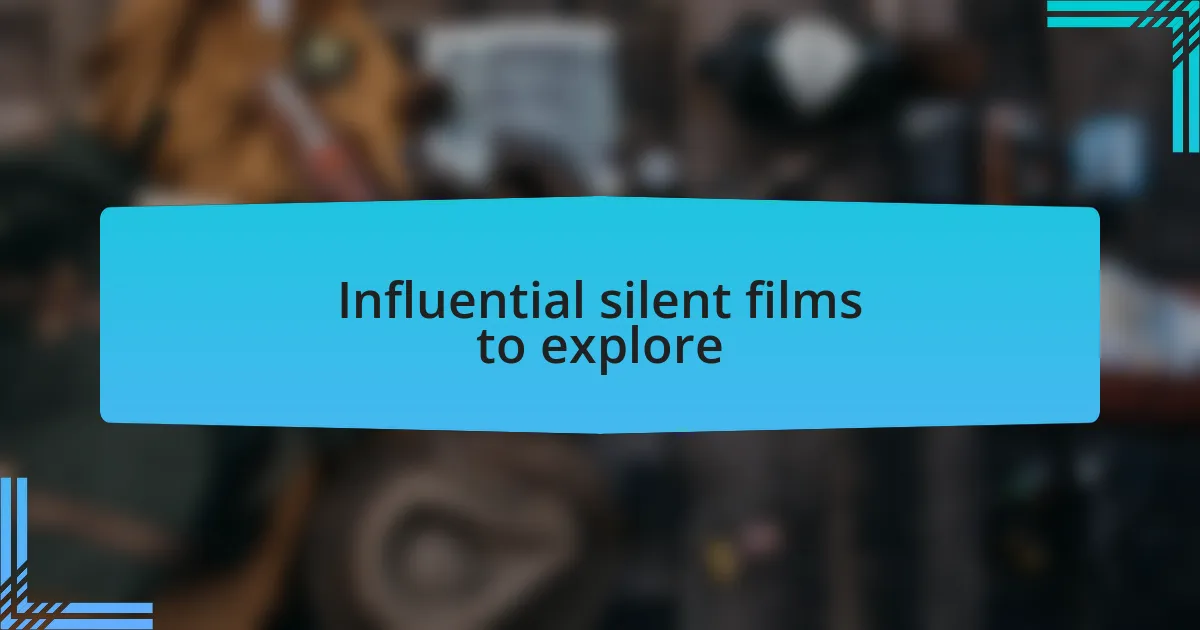Key takeaways:
- Independent cinema thrives on creativity, exploring unique narratives and personal experiences that resonate deeply with viewers.
- Silent films convey emotions powerfully through visual storytelling, with music enhancing the emotional experience.
- Notable silent films like “City Lights” and “The Passion of Joan of Arc” showcase the depth and impact of storytelling without dialogue.
- Films like “The Birth of a Nation” provoke critical discourse on race and filmmaking responsibility, highlighting cinema’s potential to challenge perspectives.

Understanding independent cinema
Independent cinema is a vibrant realm where creativity thrives outside the constraints of major studios. I remember the first time I stumbled upon a low-budget film at a local festival; the raw emotions and unique storytelling struck me in a way that mainstream films rarely did. Have you ever experienced that sense of wonder when you realize a simple story can resonate deeply without the bombastic effects?
What I find fascinating about independent cinema is its capacity to explore diverse narratives that often remain unheard in big-budget films. The directors and writers behind these projects tend to pour their personal experiences into their work, creating art that feels genuine and heartfelt. It’s like a conversation with the filmmaker – you can sense their passion, their struggles, and their joys woven into every frame.
Moreover, independent films often take risks that traditional films shy away from. They might tackle controversial themes or tell stories from underrepresented voices. I recall watching a film that challenged societal norms, making me uncomfortable yet introspective. It left me thinking long after the credits rolled; isn’t that the essence of true cinema?

The charm of silent films
The allure of silent films lies in their ability to convey deep emotions without uttering a single word. I remember watching “The General” and being captivated by Buster Keaton’s expressive face and physical comedy. It’s a testament to the craftsmanship behind these films; the way actors communicated feelings tells me that sometimes less truly is more.
One of the most enchanting aspects is the score that accompanies these films. I still recall the haunting melody during a particularly intense scene in “Sunrise: A Song of Two Humans.” It elevated the visuals and enveloped me in a sea of emotions, proving that sound can amplify visual storytelling in profound ways. Have you ever found yourself moved by music in a film, even when the dialogue is absent?
Furthermore, silent films invite viewers to engage their imagination actively. I often find myself piecing together subtext and character motivations purely through visual cues. This immersive experience makes each viewing a personal journey, allowing me to project my emotions onto the screen. Isn’t it fascinating how a story can unfold differently for each viewer, creating a unique connection with the art?

Influential silent films to explore
Silent films offer a treasure trove of influential titles worth exploring. For instance, “City Lights,” directed and starred in by Charlie Chaplin, is a film that beautifully encapsulates love, hope, and societal struggles through its touching narrative and rich visual humor. The first time I watched it, I was struck by how Chaplin’s Tramp character navigated the challenges of life with such grace and determination, compelling me to root for him despite the absence of spoken dialogue. It made me reflect on how universal human experiences can transcend words.
Another masterpiece that stands out is “The Birth of a Nation,” directed by D.W. Griffith. This film is often discussed with a critical lens due to its controversial themes and portrayal of race, but its innovative use of narrative structure and camera techniques significantly shaped the future of cinema. I remember grappling with the complex emotions it evoked in me; it sparked an interest in understanding historical contexts and the responsibilities of filmmakers. Have you ever watched a film that challenged your perspective in such a provocative way?
Then there’s “The Passion of Joan of Arc,” a poignant work by Carl Theodor Dreyer, which showcases the raw emotional power that silent cinema can achieve. The haunting performance of Renée Jeanne Falconetti had me mesmerized; her portrayal of Joan’s suffering and conviction communicated volumes without uttering a single line. Isn’t it incredible how a film from the 1920s can still resonate with our contemporary struggles for justice and identity?